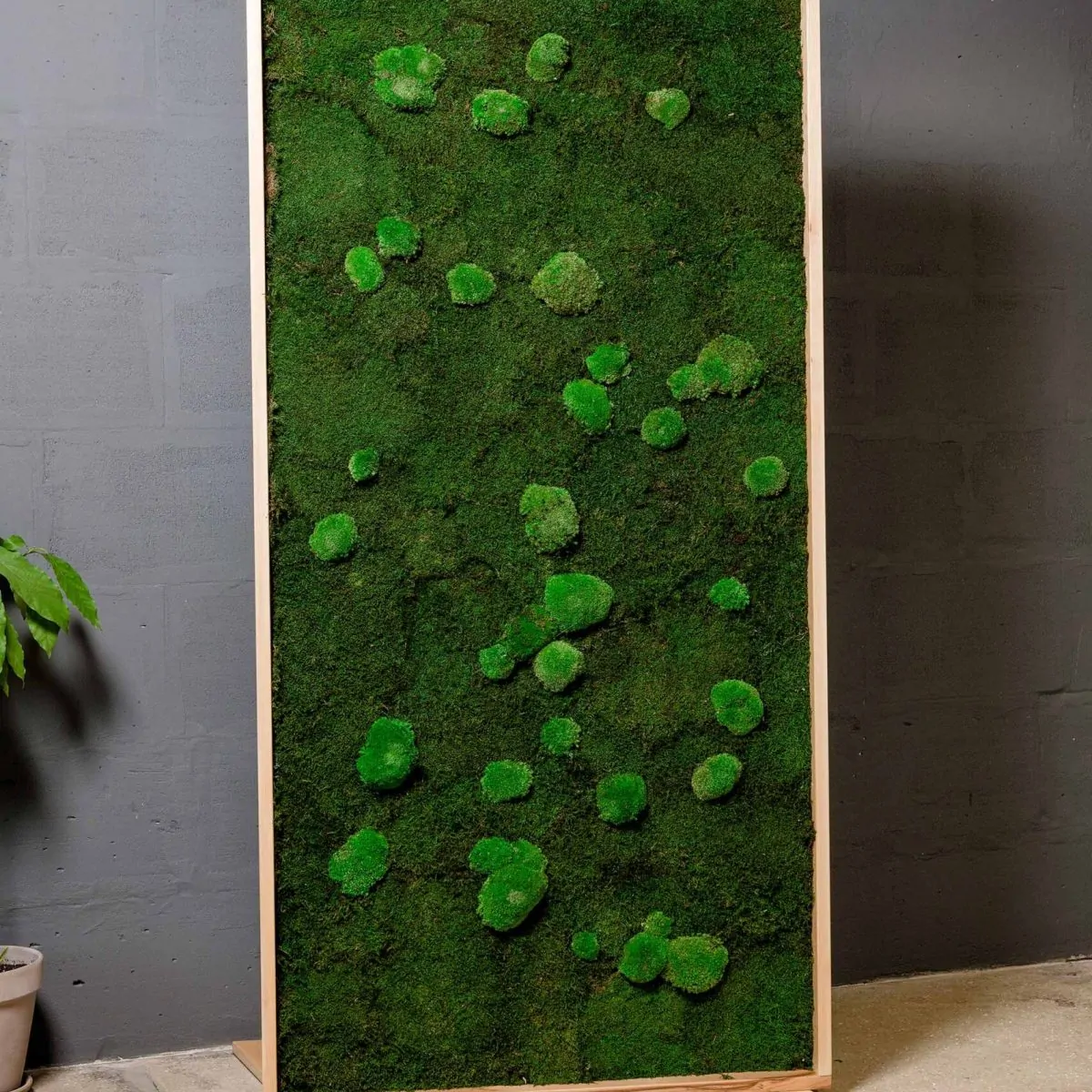
T" he greatest stresses in a rocking chair occur where the legs meet the rockers. These joints need to be strong and solid, otherwise the seemingly gentle act of rocking will eventually pull the chair apart. There are several effective methods for attaching legs to rockers. The simplest way is to turn a blind or through tenon in the ends of the legs and fit them into round mortises bored in the rockers (page 134). The tenons can be wedged for extra strength.
Dowels (below) are not as sturdy as mortise-and-tenons, but they allow the legs to be trimmed to fine-tune the balance of the chair. Using bridges (page 139) enhances a rocking chair’s appear-
DOWELS
ance and also permit adjustment of the chair’s balance. If your chair’s rockers are thin, consider pinning the legs, a traditional joinery option in which the slotted legs straddle the rockers (page 135). If your chair has a predominantly square look, butterfly keys (page 137) are strong joints that lend an attractive touch.
There is more than one way to assemble a rocking chair. If you are working from plans, you can complete the joinery’ on the legs and rockers before assembling the chair. But many woodworkers working on a new chair design prefer to assemble the chair first to see how it sits on the rockers before joining the legs to the rockers.

Balancing the chair
Align the rockers on a surface as flat as possible, such as a saw table. Then position the chair on the rockers so the back legs sit about 2 inches behind the point where the rockers contact the surface. Holding the assembly steady, gently rock the chair. It should rock smoothly with both rockers reaching the end of their forward and backward swings in unison. If the chair is pitched too far forward and will not rock back— a common problem with straight-back rockers—trim the back
legs slightly and retest. Inspect the contact point between the legs and the rockers; the legs should sit flush. If there are any gaps between the legs and rockers, sand the ends of the legs, as necessary. Once you are satisfied with the chair’s balance and the fit of the legs and rockers, use a pencil to mark a line on the outside edges of the rockers directly below the center of each leg (above). Transfer the lines to the tops of the rockers.
2 Drilling the dowel holes
 Fit an electric drill with a bit the same diameter as the dowels you are using, and wrap a strip of masking tape around the bit to mark a drilling depth that is inch more than one-half the dowel length. Hold the rocker steady as you bore each hole (left), stopping when the tape contacts the stock. Drill matching holes up through the center of each leg.
Fit an electric drill with a bit the same diameter as the dowels you are using, and wrap a strip of masking tape around the bit to mark a drilling depth that is inch more than one-half the dowel length. Hold the rocker steady as you bore each hole (left), stopping when the tape contacts the stock. Drill matching holes up through the center of each leg.

![]()
Installing the rockers
Set the chair upside down on a work surface and use a stick to dab a small amount of glue in the bottom of each dowel hole. Insert the dowels into the legs, using a wooden mallet to tap
them into position. Then fit the rockers in place (above), using the mallet with a wood striking block to tap the rockers flush with the legs. Clamp the joints until the glue is cured.
WEDGED TENONS
1 Drilling holes for the tenons
 If you are using wedged tenons to join the legs to the rockers, you will need to turn a tenon at the bottom of each leg as you would on a stretcher (page 104). For a through tenon, make the tenon equal in length to the height of the rockers; for a blind tenon, make it one-half as long. Mark the location of the legs on the rockers (page 132), then install a bit in your drill press the same diameter as the tenon. To bore each hole, set the rocker on a scrap panel on the machine table, align the leg mark under the bit, and clamp the rocker in place, using a shim to hold the workpiece flat (right). Drill the hole completely through the rocker for a through tenon or ‘A inch past the halfway point for a blind tenon.
If you are using wedged tenons to join the legs to the rockers, you will need to turn a tenon at the bottom of each leg as you would on a stretcher (page 104). For a through tenon, make the tenon equal in length to the height of the rockers; for a blind tenon, make it one-half as long. Mark the location of the legs on the rockers (page 132), then install a bit in your drill press the same diameter as the tenon. To bore each hole, set the rocker on a scrap panel on the machine table, align the leg mark under the bit, and clamp the rocker in place, using a shim to hold the workpiece flat (right). Drill the hole completely through the rocker for a through tenon or ‘A inch past the halfway point for a blind tenon.
|
|
|
|
|
|


|
|
|
|
|
|
|
|
|
|
|


![]()
![]()
![]()
![]()

4 Attaching the legs to the rockers
Balance the chair on the rockers (page 132), then mark the matching dowel holes on the sides of the rockers, using the holes in the legs as a guide. Remove the chair and drill holes at each mark. Then reposition the chair on the rockers and cut a length of %-inch dowel for each hole slightly longer than the full thickness of the legs. Spread some glue in the holes in the rockers and legs and insert the dowels, tapping each one in place with a hammer (right). Pare the ends of the dowels flush using a chisel, then sand them smooth.
3 Preparing the legs for dowels
Cut a V-shaped wedge out of a wood block, creating a jig that will hold the turned legs steady as your bore the dowel holes. Install a %-inch brad-point bit in your drill press and clamp the jig to the machine table so the bottom of the V is centered under the bit. Then place the leg in the jig, align the middle of the notch with the bit, and clamp a length of dowel to the jig against the leg. The dowel will ensure that the holes in each leg are properly positioned. Holding the leg with one hand, bore the dowel through both sides of the notch (left). Once you have prepared all four legs, glue up the chair.

BUTTERFLY KEYS
|
1 |
Making the keys
If you are connecting rockers to a chair with butterfly keys, start by making the keys, using hardwood that contrasts with the leg and rocker stock. Using a ^-inch-thick strip, rip the stock Уа inch narrower than the width of the legs. Outline two keys for each leg on the strip, making them slightly longer than the height of the rockers. Angle the sides of the keys at 10°. Once the keys are outlined, cut them from the strip on your band saw (right).
|
2 |
Outlining the recesses for the keys
If the chair has been glued up, you will need to balance it on the rockers to determine the location of the joints. In the example shown here, the chair will be assembled after the rockers and legs are joined. In either case, position the leg against the rocker, center the butterfly key on the joint and use a pencil to outline its shape on the sides of the leg and rocker (left). Repeat on the other side of the joint and on both sides of the remaining legs and rockers.

4 Joining the legs and rockers
Test-fit the keys in their recesses and bevel the undersides of any that fit poorly. Then spread some glue in the recesses and insert the keys, tapping them in place with a wooden mallet (right). Lay a wood pad across the panel, using clamps at its ends to hold the key in place while the glue cures. Sand the keys flush with the surface of the legs and rockers, then drive a countersunk screw from the underside of the rocker into each leg to reinforce the joint.
|
3 |
Making the recesses
Clamp one of the legs or rockers to a work surface, protecting the stock with wood pads. Cut the recess with a bevel – edged chisel no wider than the narrowest part of the outline. Holding the chisel horizontal, flat-side down, shave the waste wood away in thin layers (left). Work carefully to cut only within the outline and to a depth slightly less than the thickness of the keys. Repeat for the remaining outlines.
 |
 |
ADDING WOOD BRIDGES
|
1 |
 Gluing the bridges to the rockers
Gluing the bridges to the rockers
If you are Lfsing dowels or round tenons to join the legs to the rockers, you can add bridges between the two for decorative effect and for fine-tuning the balance of the chair. Mark the joints between. the legs and rockers (page 132), then glue a bridge to the top edge of the rockers at each mark (above). Cut the bridges to the same width as the rockers and about one-half as thick from the stock used to build the chair. If the rockers are laminated, you can use the same technique to make the bridges.
|
3 |
 Rounding over the edges of the rockers
Rounding over the edges of the rockers
To further enhance the visual appeal of the rockers, round over their top edges. Install a &-inch piloted round – over bit in a router and mount the tool in a table. To provide a bearing surface for the rockers, fashion a guard for the bit and a fence for the stock to ride against the infeed side of the table. Screw the guard and fence together and clamp them to the table. Press the workpiece against the pilot bearing as you feed each rocker across the table, then turn over the stock and rout the other edge (left). Use a push stick to complete each pass. Once both rockers have been rounded over, attach them to the legs. Then use a rasp to smooth the joint and form a seamless transition between the bridges and the legs (photo, page 124).
Gluing up the front leg assembly
For the front leg assembly, you will need a single bar clamp and a pair of clamping pads. Glue the front legs to the front seat rail, sighting along the rail to ensure that the legs are perfectly aligned (right). If they are misaligned, slacken the clamp a little, twist the legs into line and retighten. Let the glue in the front and back leg assemblies cure for 24 hours before proceeding to final glue-up.
Joining the leg assemblies
Working quickly, fit the front leg assembly onto the side seat rails and set the chair upright. Install two clamps along the side rails, protecting the front legs with wood pads. Tighten the clamps (above), then gently rock the chair to ensure that it is level. If not, loosen the clamp on the uneven leg, slide one of its jaws up slightly, and retighten. Check again for level, shifting the clamps as necessary until the chair is level. Also make sure that the top edges of all the seat rails are level with the tops of the front legs; use a mallet and striking block to tap the rails into position, if necessary.
Wedging the leg tenons
Set the seat upright and trim the tenon ends to slightly above seat level with a flush-cutting saw. To make wedges for the tenons, cut some hardwood pieces on the band saw about 1 inch long and % inch thick at the base, tapering to a point. Place glue in the kerf and on the wedge, then hammer it in place with a wooden mallet (right). Be careful not to insert the wedge too deeply or it might split the tenon.
Stuffing the seat
Once the rushing is about two-thirds done, it is time to stuff the seat. (The stuffing provides extra padding). To prevent the rush from slackening, use a spring clamp to secure the loose length you are installing to a seat rail. Use cardboard for the padding, cutting one triangular piece for each each side of the seat so that the triangle’s long side is slightly shorter than the seat rail. Slip the padding under the rushing (right), then trim the tips if they overlap in the center. Continue the normal circuit as before until the two side rails are covered.



